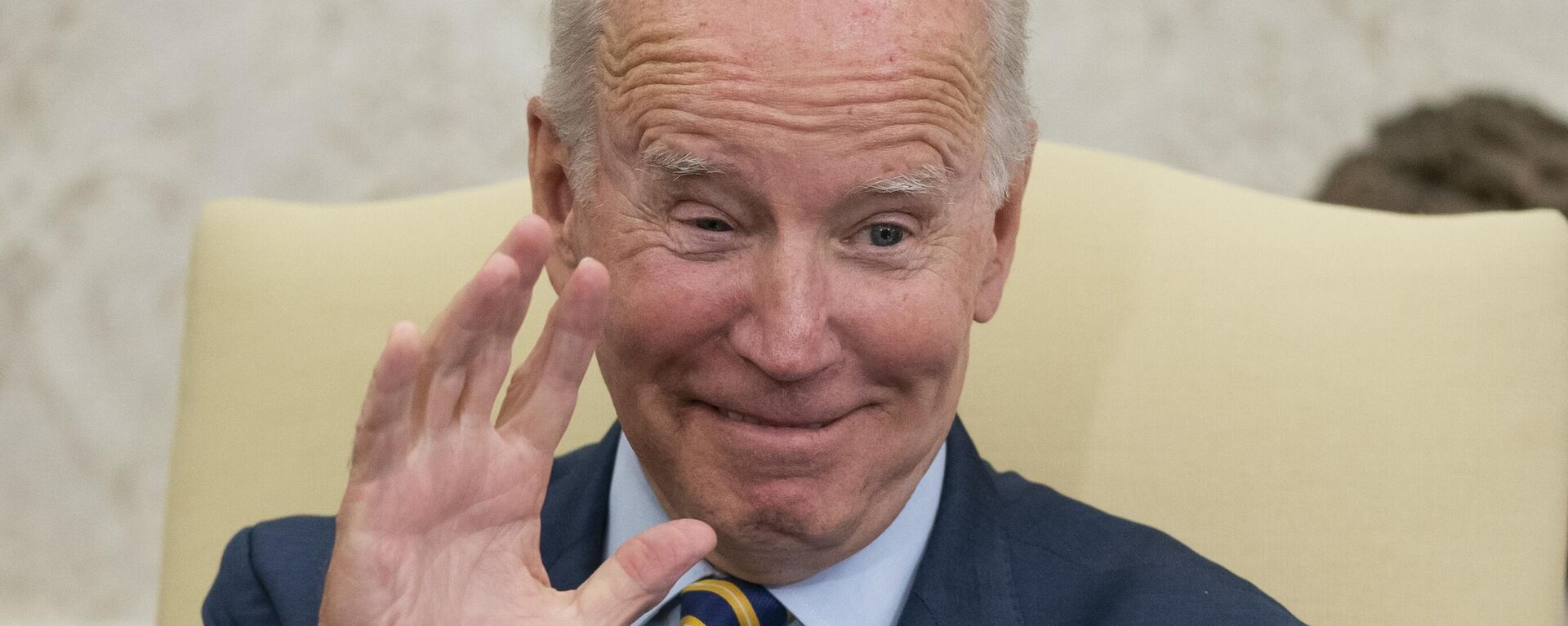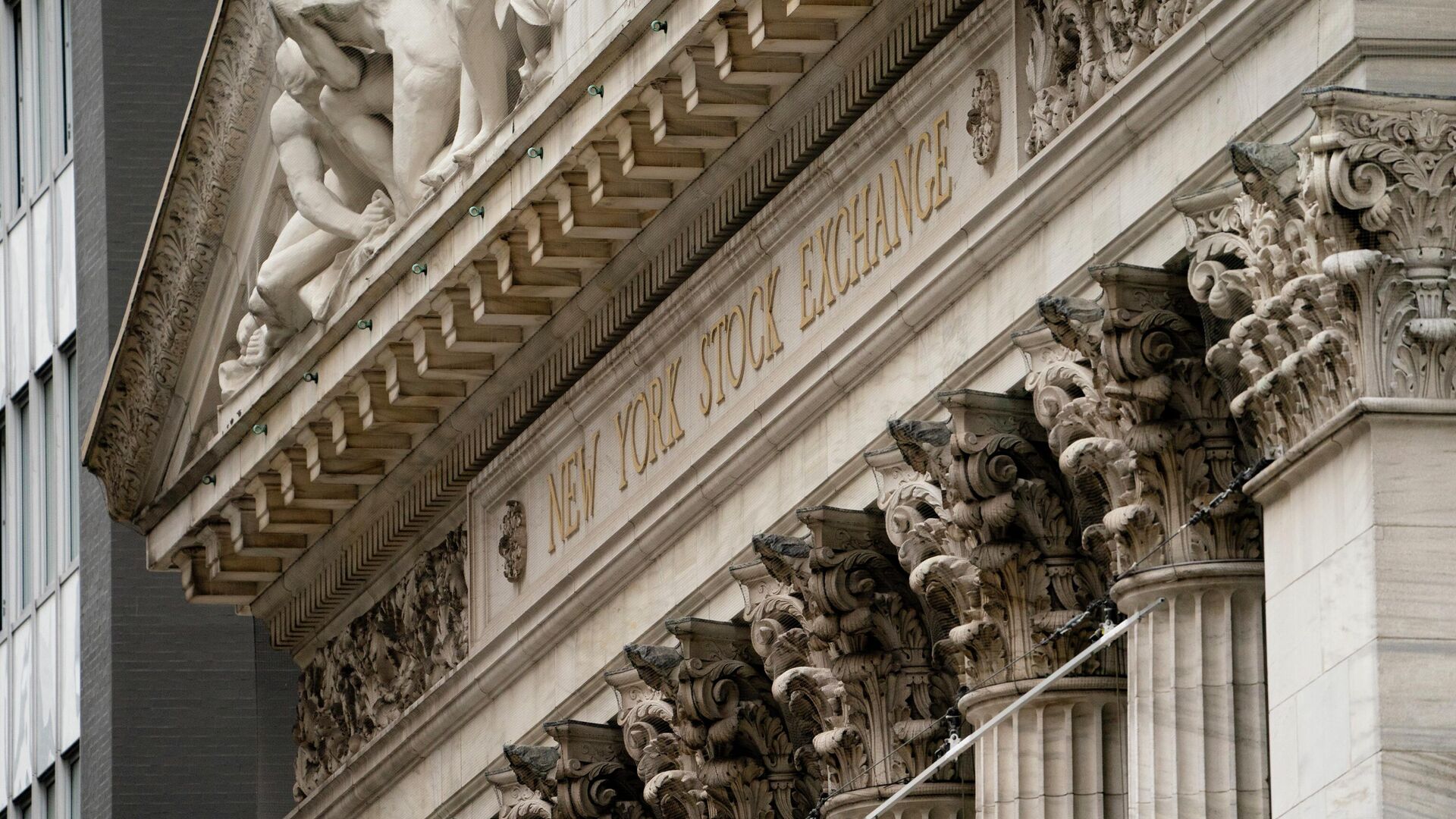https://sputnikglobe.com/20230106/us-stocks-have-best-week-since-november-as-smaller-jobs-growth-signals-smaller-rate-hikes-1106093400.html
US Stocks Have Best Week Since November as Smaller Jobs Growth Signals Smaller Rate Hikes
US Stocks Have Best Week Since November as Smaller Jobs Growth Signals Smaller Rate Hikes
Sputnik International
NEW YORK (Sputnik) - Wall Street posted its biggest weekly gain since November as moderating US jobs growth signaled that the Federal Reserve would further... 06.01.2023, Sputnik International
2023-01-06T22:55+0000
2023-01-06T22:55+0000
2023-01-06T22:50+0000
economy
us
us stocks
wall street
job market
rate hikes
https://cdn1.img.sputnikglobe.com/img/07e6/05/09/1095382707_0:160:3073:1888_1920x0_80_0_0_356385a6410d904dcc9226c56b700e5d.jpg
The Dow Jones Industrial Average, which serves as Wall Street’s broadest equities indicator with stocks of 30 large US corporations, closed Friday’s trade up 701 points, or 2.1%, at 33,630. The Dow finished the week up 1,5% for its largest weekly advance since November 18. The S&P 500 Index, which represents the top 500 US stocks, finished the day up 87 points, or 2.3%, at 3,895. For the week, the S&P rose 1.4%, its most since the week ended November 18. The Nasdaq Composite Index, which comprises marquee names in technology such as Amazon, Apple, Netflix and Google, settled the session up 264 points, or 2.6%, at 10,569 The Nasdaq gained 1% on the week for its strongest weekly advance since the week to November 25. Friday’s rally in stocks came after the US Labor Department reported that nonfarm payrolls in the United States grew by 223,000 last month, some 40,000 below November’s level and by the smallest number since the 199,000 positions added in December 2021. Last month’s payroll growth was still well above the 202,000 forecast by economists, proving the tough job the Fed has in cooling a runaway jobs market that was feeding inflation. However, market punters still bet on the central bank doing a rate hike as small as 25 basis points at its next policy decision in February, after a 50-basis point hike in December and four back-to-back hikes of 75 basis points between June and November. Meanwhile, the markets are awaiting the December reading for the Consumer Price Index (CPI) next week. The CPI expanded by 7.1% during the year to November, after hitting a four-decade high of 9.1% during the 12 months to June. The drop in inflation came after relentless rate hikes last year by the Fed, which added 425 basis points to rates between March and December. Prior to that, rates peaked at just 25 basis points, as the central bank slashed them to nearly zero after the global COVID-19 outbreak in 2020. Despite its aggressive monetary tightening, inflation remains more than three times higher than the 2% per year level preferred by the Fed, which has vowed to bring price pressures back to its target.
https://sputnikglobe.com/20221211/biden-says-us-economy-could-grow-faster-than-that-of-china-1105363852.html
wall street
Sputnik International
feedback@sputniknews.com
+74956456601
MIA „Rossiya Segodnya“
2023
Sputnik International
feedback@sputniknews.com
+74956456601
MIA „Rossiya Segodnya“
News
en_EN
Sputnik International
feedback@sputniknews.com
+74956456601
MIA „Rossiya Segodnya“
Sputnik International
feedback@sputniknews.com
+74956456601
MIA „Rossiya Segodnya“
us, us stocks, wall street, job market, rate hikes
us, us stocks, wall street, job market, rate hikes
US Stocks Have Best Week Since November as Smaller Jobs Growth Signals Smaller Rate Hikes
NEW YORK (Sputnik) - Wall Street posted its biggest weekly gain since November as moderating US jobs growth signaled that the Federal Reserve would further slow the pace of its interest rate hikes.
The Dow Jones Industrial Average, which serves as Wall Street’s broadest equities indicator with stocks of 30 large US corporations, closed Friday’s trade up 701 points, or 2.1%, at 33,630. The Dow finished the week up 1,5% for its largest weekly advance since November 18.
The S&P 500 Index, which represents the top 500 US stocks, finished the day up 87 points, or 2.3%, at 3,895. For the week, the S&P rose 1.4%, its most since the week ended November 18.
The Nasdaq Composite Index, which comprises marquee names in technology such as Amazon, Apple, Netflix and Google, settled the session up 264 points, or 2.6%, at 10,569 The Nasdaq gained 1% on the week for its strongest weekly advance since the week to November 25.
Friday’s rally in stocks came after the US Labor Department reported that nonfarm payrolls in the United States grew by 223,000 last month, some 40,000 below November’s level and by the smallest number since the 199,000 positions added in December 2021.

11 December 2022, 22:01 GMT
Last month’s payroll growth was still well above the 202,000 forecast by economists, proving the tough job the Fed has in cooling a runaway jobs market that was feeding inflation.
However, market punters still bet on the central bank doing a rate hike as small as 25 basis points at its next policy decision in February, after a 50-basis point hike in December and four back-to-back hikes of 75 basis points between June and November.
"Stocks are getting a boost here as Fed rate hike bets get slashed, but earnings risks should keep the gains somewhat limited," Ed Moya, analyst at online trading platform OANDA, said. "The focus will shift to next week’s inflation report and traders should not be surprised if inflation falls even further than expected."
Meanwhile, the markets are awaiting the December reading for the Consumer Price Index (CPI) next week.
The CPI expanded by 7.1% during the year to November, after hitting a four-decade high of 9.1% during the 12 months to June. The drop in inflation came after relentless rate hikes last year by the Fed, which added 425 basis points to rates between March and December. Prior to that, rates peaked at just 25 basis points, as the central bank slashed them to nearly zero after the global COVID-19 outbreak in 2020.
Despite its aggressive monetary tightening, inflation remains more than three times higher than the 2% per year level preferred by the Fed, which has vowed to bring price pressures back to its target.



